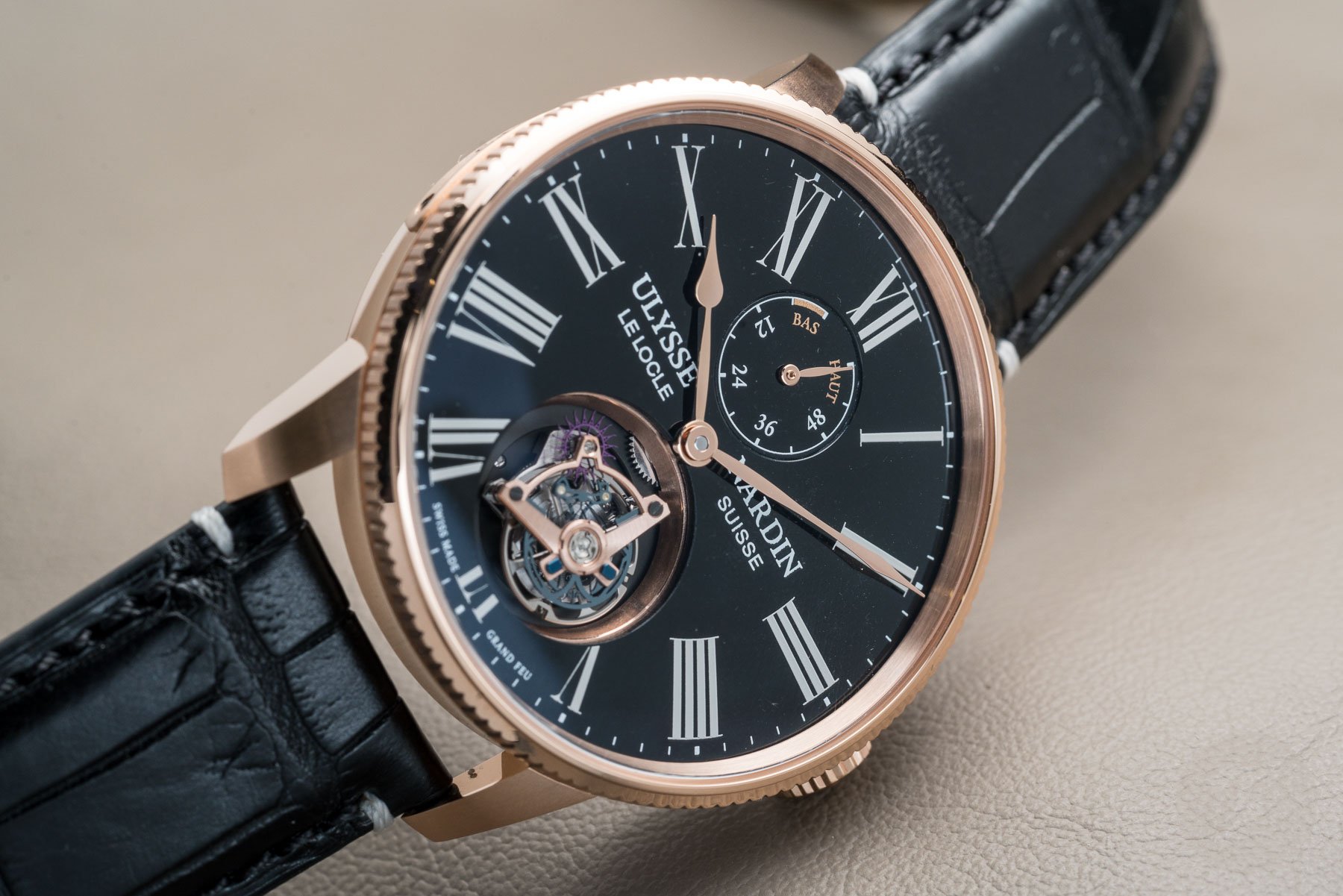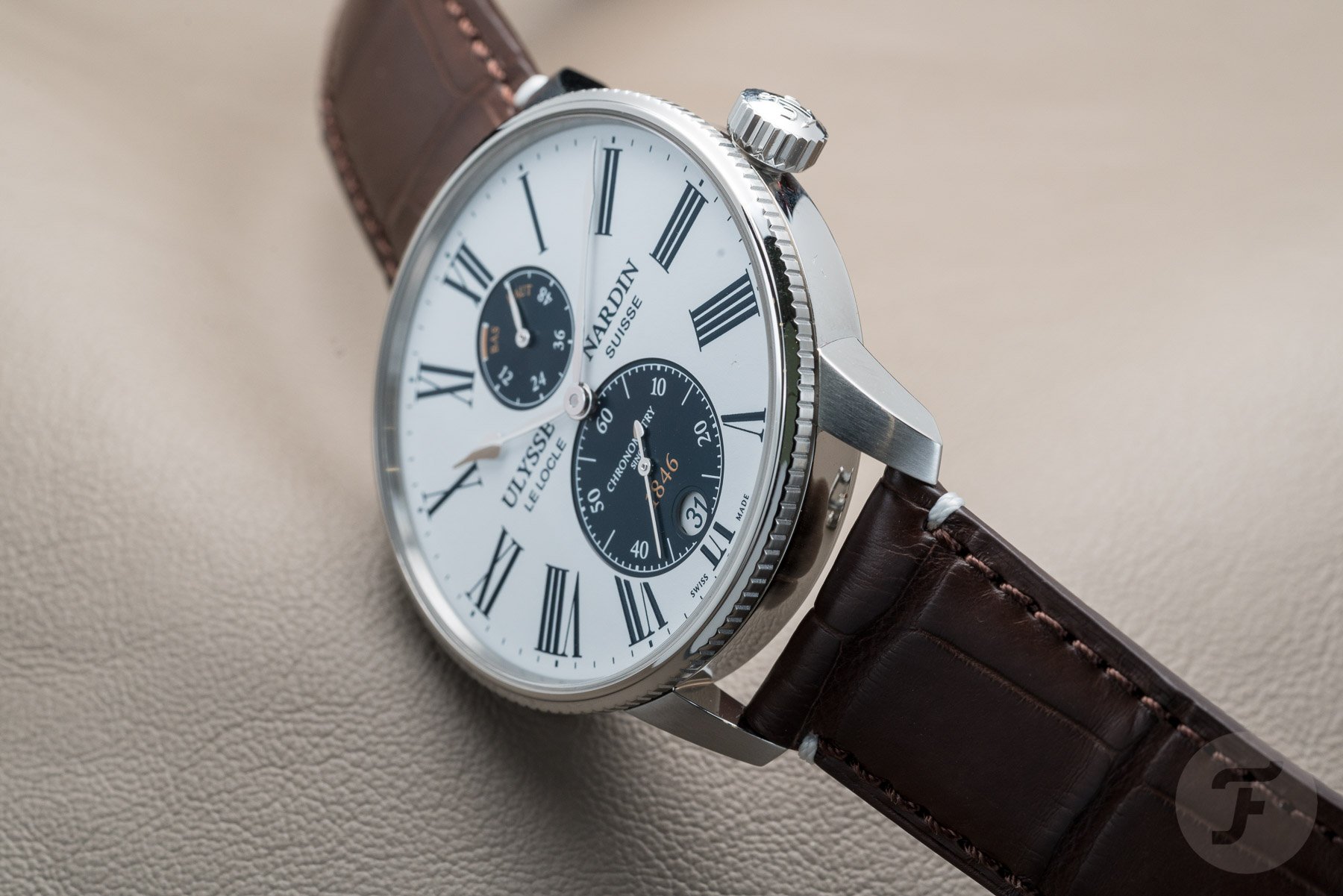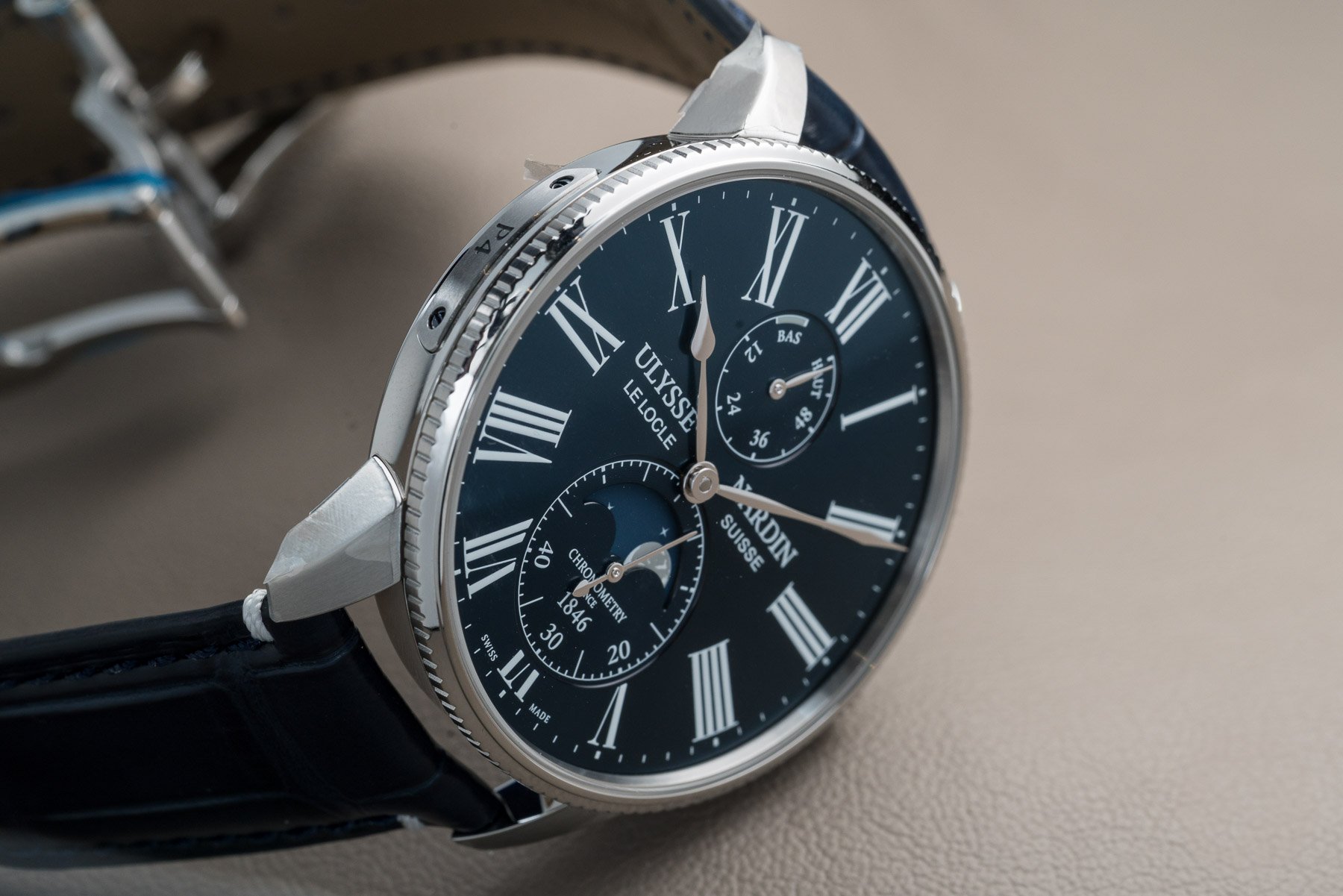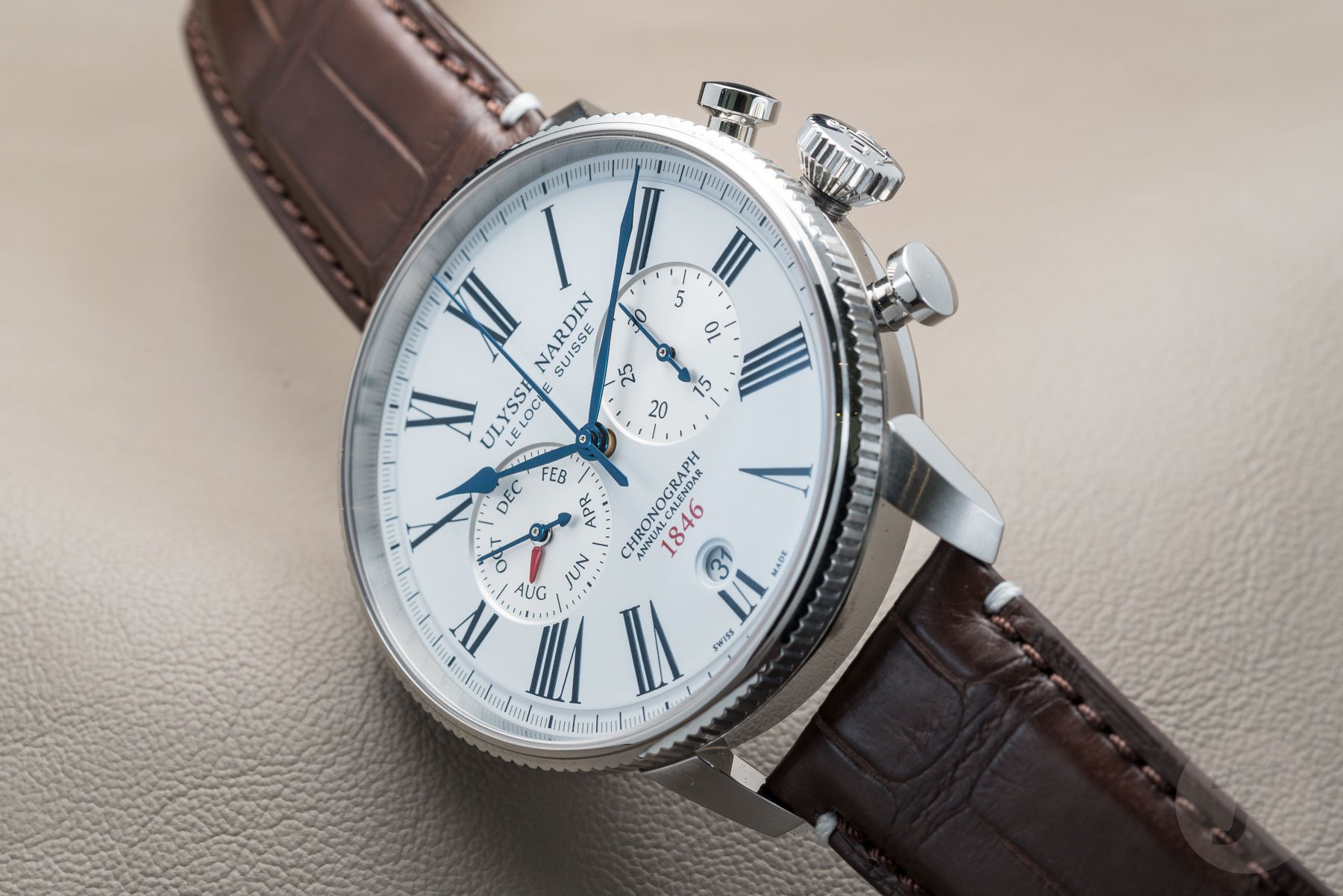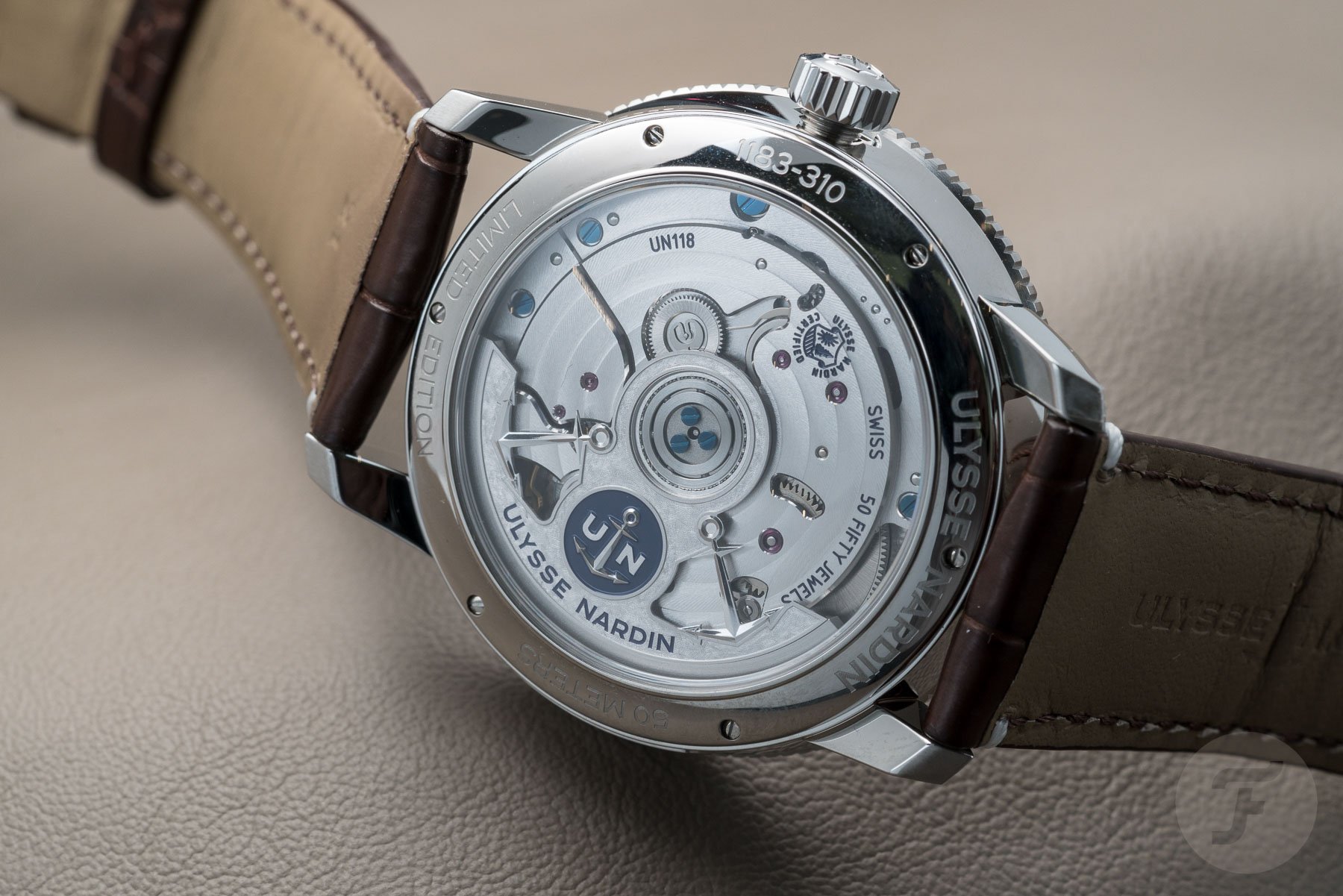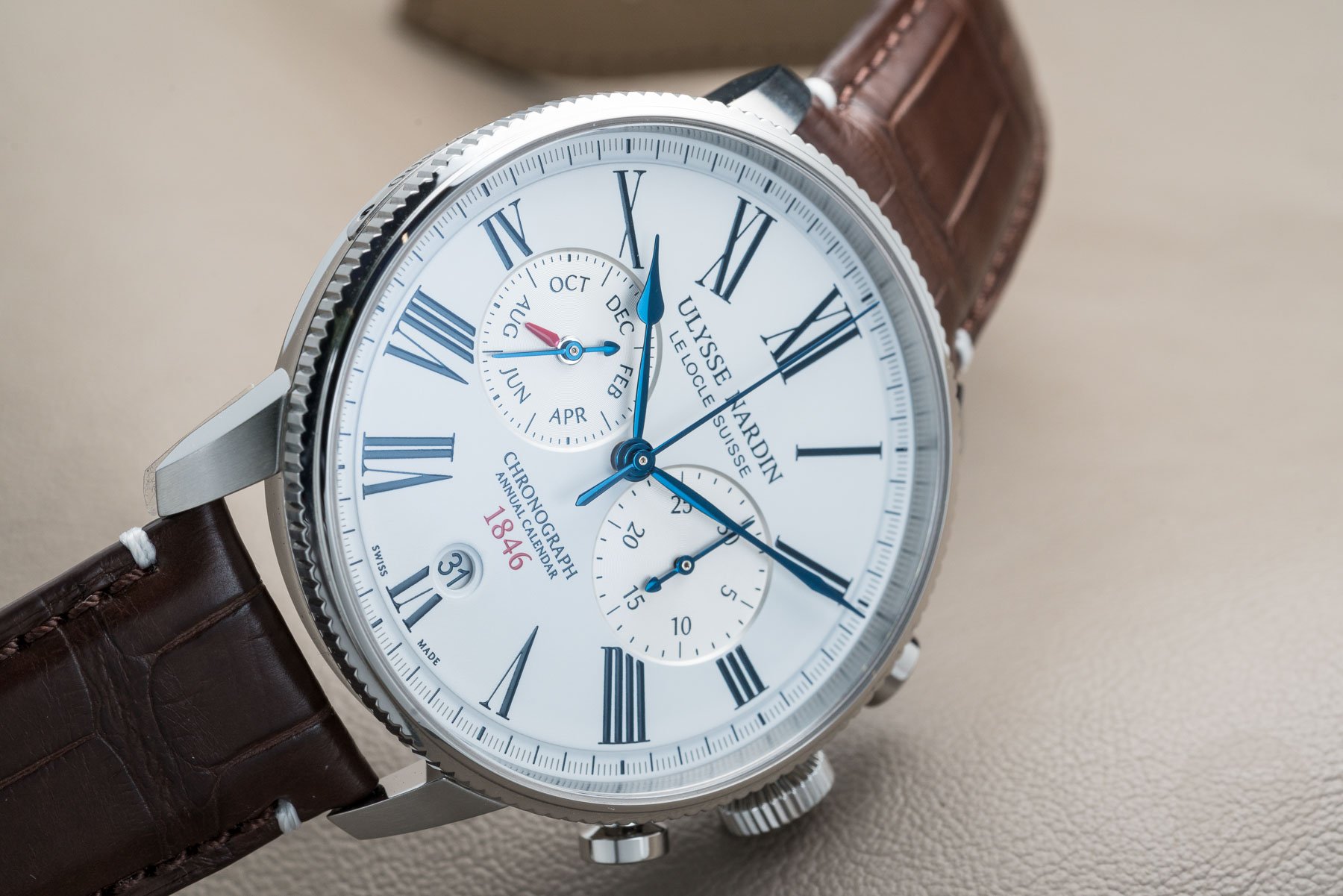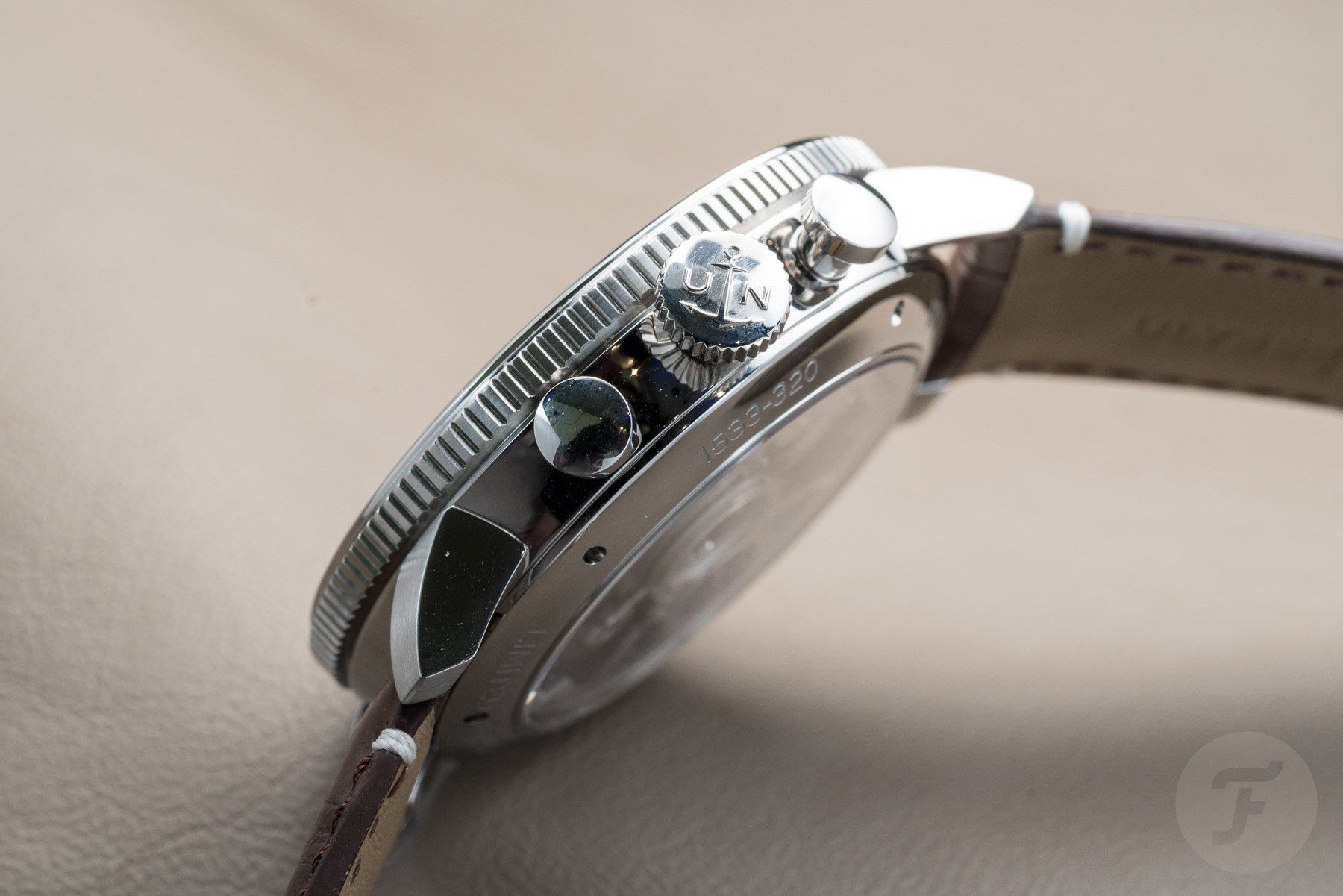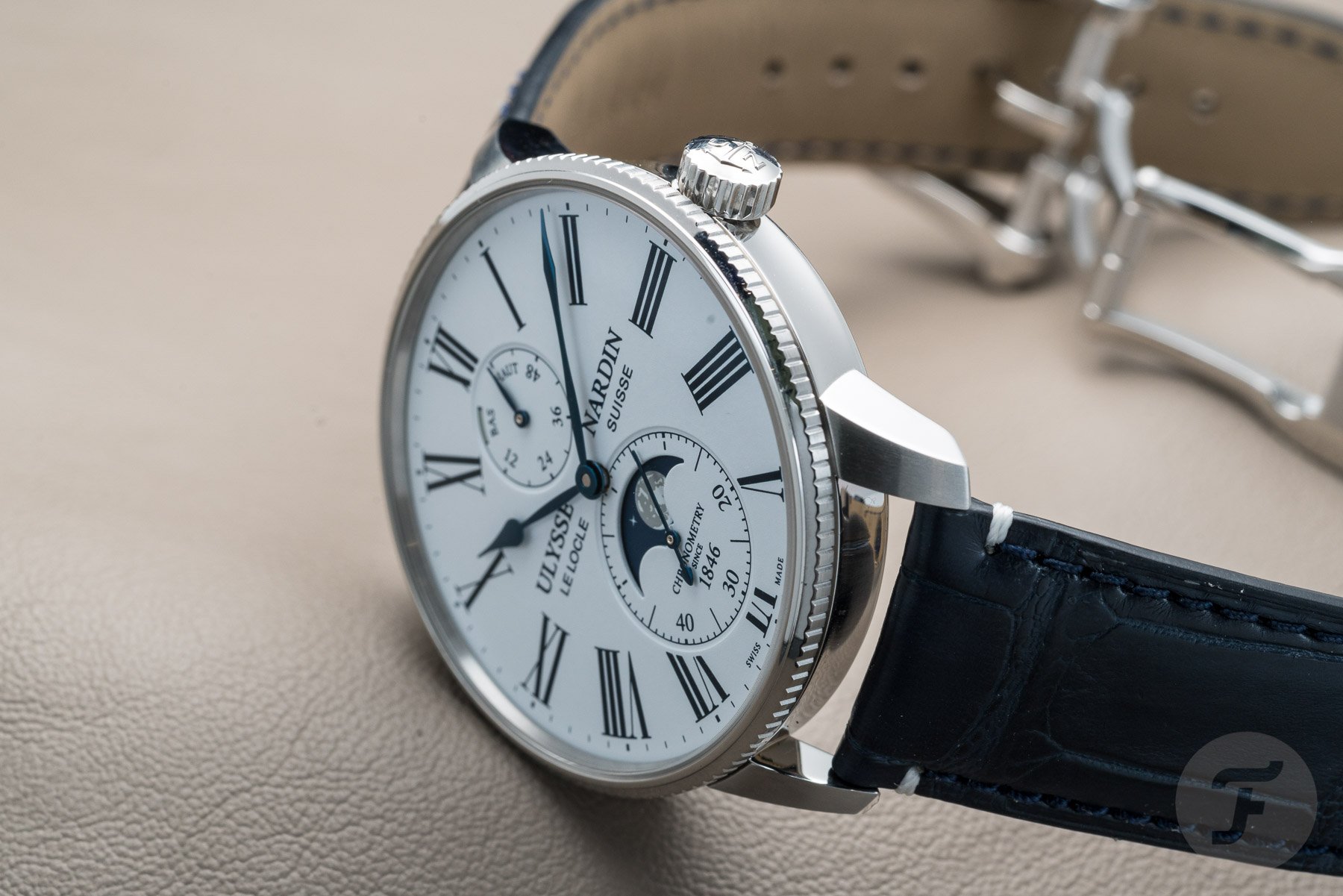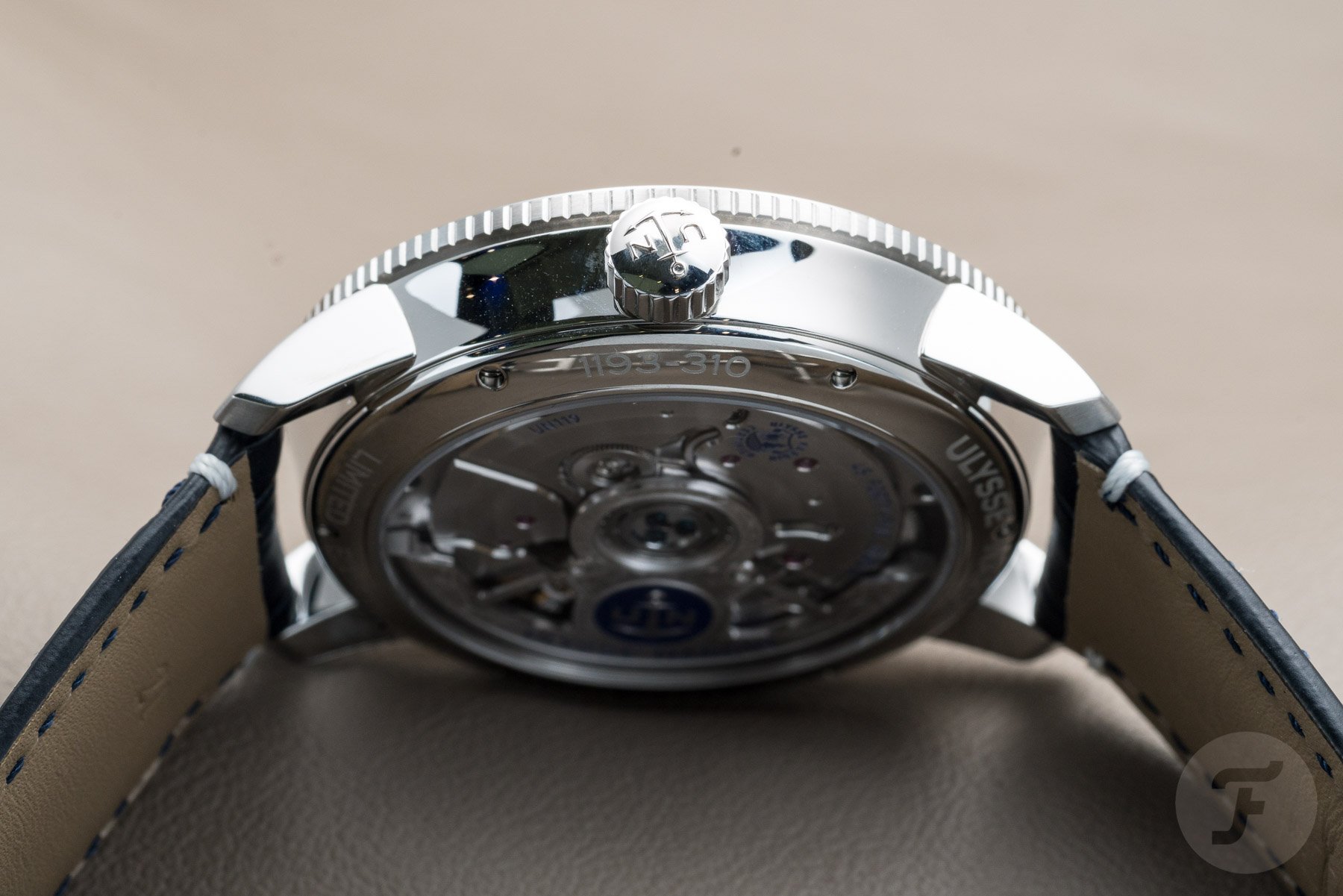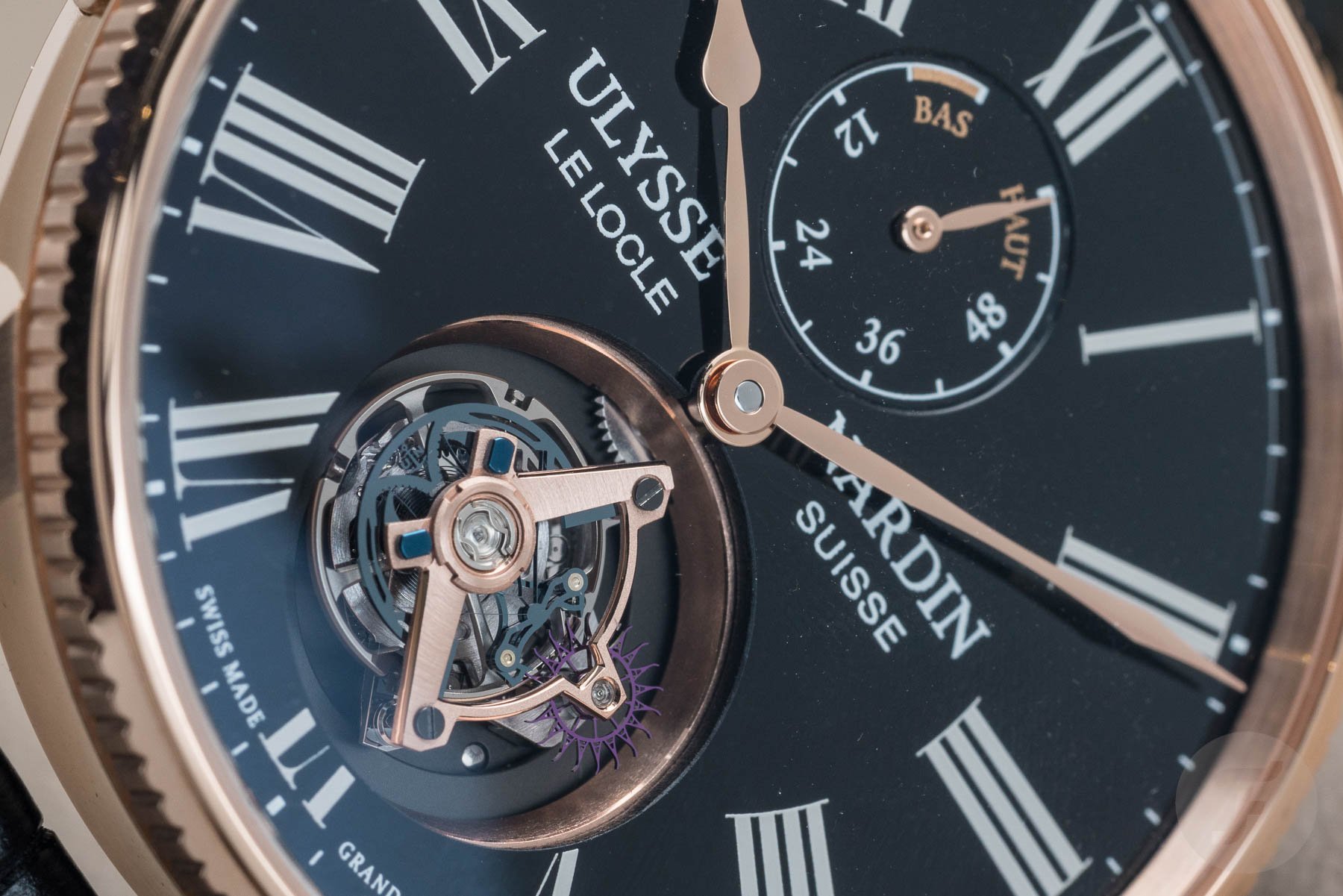Geneva Watch Days 2021: The New Ulysse Nardin Marine Torpilleur Limited Editions
Aside from perhaps the Freak, Ulysse Nardin’s Marine Chronometer is without a doubt the brand’s most recognizable model. And indeed it should be, for when Ulysse Nardin first established his workshop in 1846, he set his sights on producing the finest marine chronometers the world had ever seen. Through the rest of the 19th and early 20th centuries, Ulysse Nardin’s superbly accurate chronometers became indispensable tools for over 50 navies worldwide. In 1996, for the brand’s 150th anniversary, the marine chronometer aesthetic finally made its way into a wristwatch.
In the 25 years since then, the Marine Chronometer has proven to be a very successful style indeed. These days, Ulysse Nardin‘s standard Marine Chronometer features a 43mm case, blocky lugs, an integrated strap, luminescent hands and numerals, a rubberized crown insert, rectangular crown guards, and 100m of water resistance. These rather sporty specs make Ulysse Nardin’s iconic offering an equally capable companion for both the weekend water-dweller and the business-casual bachelor. Their distinctive dials, however, with large Roman numerals, pear hands, sub-seconds, and power reserve indicator, echo an aesthetic formula that has stood the tests of time.
Revising an icon
For those seeking a traditional approach to the Marine Chronometer without such rugged features, the Marine Torpilleur sails to the rescue. Originally released in 2017, the Torpilleur gives off a decidedly more restrained air than its sporty sibling. While it provides a dressier look, the Marine Torpilleur reigns in the specs just enough, without sacrificing the most critical Marine Chronometer elements. Ulysse Nardin’s latest limited-edition additions (limited additions?) to the collection introduce a few new color combinations, complications, and materials to the Torpilleur line. 2021 marks the brand’s 175th anniversary. This being no small occasion, Ulysse Nardin aims to highlight some of its most characteristic manufacturing techniques and best innovations of the last two decades with these seven new offerings. Let’s dive in and check them out!
Marine Torpilleur Panda and Blue Enamel in stainless steel
In both their cases and complications, these two Marine Torpilleur models are the foundation of the new lineup. In comparison to the standard Marine Chronometer, they feature slightly shrunken cases. Ulysse Nardin reduced them from 43mm to 42mm in diameter and from 51mm to 49mm lug-to-lug. At just 11.13mm in height, they remain quite slim indeed. Instead of the sporty, blocky lugs and integrated straps, the Torpilleur models feature traditional lugs with a 21mm spacing. The tops of the lugs are brushed, while the sides of the case, lugs, and bezel all have a mirror finish. The rubber crown insert and crown guards from the sportier model are now gone, having been swapped for an all-steel, unencumbered crown. Water resistance has also been scaled back from 100m to 50m.
The traditional Marine Chronometer elements, however, are all present. The cases retain their deck-clock-inspired shape and ribbed-edge bezels. Large Roman numerals, a proud sub-seconds indicator and date window at six o’clock, and a smaller power reserve indicator at 12 o’clock give the dial its unmistakable, historical look. In contrast to the standard Marine Chronometer, however, the Torpilleur features no luminescence at all. Rather, the Roman numerals are printed, contrasting the white and blue dials. The silver pear hands on both models feature a highly polished rhodium finish.
New design variations
While these two models offer nothing new in terms of complications, they do bring some new aesthetic details to the collection. The Panda edition marks the first time (to my knowledge) that the Marine Chronometer has ever had contrasting sub-dials. For fans of legibility, navy blue sub-dials on a white varnish backdrop are a welcomed addition. The Panda’s blue Roman numerals are also a departure from the line’s standard black ones.
Donzé Cadran, the brand’s now-in-house dial manufacture, produced the dial of the Blue Enamel variant. As Ulysse Nardin sees enameling as one of the brand’s most signature artforms, the dial is fired in true “Grand Feu” fashion. Masters apply layer upon layer of enamel dust on a copper base, firing it in a kiln between 760 and 900°C between each one. If you’d like to read more about how these dials are made, check out this article on WatchTime.
Under the hood
The basic Torpilleur models run on Ulysse Nardin‘s manufacture UN-118 caliber. In terms of specs, the movement is quite a nice one indeed. The chronometer-certified, 50-jewel caliber features central hour and minutes, sub-seconds and power reserve indicators, and a quick-set date that can be adjusted both forward and backward. Interestingly, that’s a pretty uncommon feature. Caliber UN-118 beats at 28,800vph and has 60 hours of power reserve. Though the finishing is done by machine, it is quite beautiful. The anchor-shaped rotor features an aged, patina-like weathered finish with raised, highly polished edges and two miniature beveled anchors. All visible screws are blue. While the mainplate is home to generous amounts of perlage, the bridges feature a unique radial striping pattern. Vertical “Geneva stripes” have become nearly an expectation in finishing these days. Circular striping, however, is significantly less common.
In addition to its tasteful finishing, the UN-118 caliber also has a few technical tricks up its sleeve. As the first watch company to pioneer the use of silicon components in 2001, Ulysse Nardin is extremely proud of its silicium hairspring, DIAMonSIL (diamond-coated silicium) escapement, and variable-inertia balance wheel. While “silicium” is actually just an obsolete term for silicon, the brand may use it to avoid negative connotations with cheapness, or even confusion with silicone (no, they are not the same). Regardless, silicon escapements have clear advantages over traditional metal ones. Silicon is light, antimagnetic, and it requires no lubrication. A machine can also cut silicon to tolerances exponentially finer than metal — down to fractions of a micron! As such, escapements with silicon components are not only less prone to wear and magnetism, but they also will require fewer fine, costly adjustments over time.
Marine Torpilleur Moonphase — the same, but different
These models feature the exact same case specifications as the Torpilleur models above, so no need to rehash those here. The main differences on these Moonphase models are the dials, hands, movements, and of course, the additional complication. The movement in this model is the brand new caliber UN-119. This 45-jewel manufacture caliber also runs at 28,800vph, has a power reserve of 60 hours, and is a COSC-certified chronometer. Like the rest of the movements in the Torpilleur collection, UN-119 also features Ulysse Nardin‘s signature silicon escapement and balance spring for added reliability. In exchange for the date indicator, a moonphase fits beautifully within the small seconds sub-dial at six o’clock. The blue night sky is a PVD finish, with silver three-dimensional moon and stars.
While the white dial of the Marine Torpilleur Moonphase features the same white varnish and blue Roman numerals as the model above, all four of the hands have been thermally blued. The color complements the blue of the moonphase disc quite nicely, if I may say so myself. The blue dial of the Torpilleur Moonphase is not enamel, but rather, a blue, sunburst PVD finish. High-polished, rhodium-plated hands carry over from the base model. Not only does this model feature a brand new movement, but as far as my research suggests, this is also the first time we’ve ever seen a moonphase complication in the Marine line.
Marine Torpilleur Annual Chronograph
With these models, Ulysse Nardin takes a few steps up the ladder of complications. The UN-153 manufacture caliber inside the Torpilleur Annual Chronograph echoes most of the tech and basic specs of the UN-118 and 119, the obvious difference being its chronograph and annual calendar functions. The brand does not specify whether this movement is COSC-certified. I will assume it is not. It is, however, a fully integrated column-wheel chronograph, capable of timing up to 30 minutes. It also features an annual calendar module by Ludwig Oechslin. The annual calendar complication requires manual adjustment just once a year, on March 1st. Oeschlin is responsible for democratizing this complication (which you can read more about here). Thanks to his module’s simplified construction, one can adjust both the date and the month forward and backward without the risk of damage.
As with the previous models, the dials of Torpilleur Annual Chronograph come in both white and blue. Just like the Torpilleur Moonphase, the white dial of the Annual Chronograph features blue Roman numerals on a white varnish backdrop. The sub-dials, however, have a silvered finish. All of the hands are thermally blued as well. While the blue dial variant features white printing just like the previous models, the blue color is a matte, rather than sunburst, PVD finish. Another really nice touch is the gold chronograph and month hands. Their warm hue contrasts the rhodium-plated hour and minute hands beautifully
Continuing UN’s chronograph tradition
Ulysse Nardin takes pride in its history as a chronograph maker. The brand originally produced Chronograph Marine Torpilleur pocket watches from 1936 to 1980. Officials at the 1936 Berlin Olympics even used them, as they were able to measure time to 1/10th of a second. The UN-153 movement has seen action in the standard Marine for quite some time now. This is the first time, however, that we’ve seen a chronograph offered in the modern-day Marine Torpilleur wristwatch. To me, the option makes good, logical sense.
The head-scratcher for me, however, is the case size. Ulysse Nardin actually scaled it up from 42 to 44mm. That makes it even 1mm larger in diameter than its standard Marine Chronograph counterpart. Perhaps this is a historical nod to the Torpilleur chronograph pocket watches old? Thankfully, at least, the circular pump pushers suit the more classic design rather nicely. While I can’t quite wrap my head around the larger diameter, the case does remain nearly a millimeter and a half thinner than the standard Marine Chronograph, at 13.66mm in thickness.
Marine Torpilleur Tourbillon Grand Feu — the king’s crown of the bunch
Continuing its long, illustrious tradition of tourbillon manufacturing, Ulysse Nardin pulls out all the stops with the Marine Torpilleur Tourbillon. The UN-128 caliber in this watch has a flying tourbillon, but not just any flying tourbillon, oh no. The caliber features UN’s proprietary silicon constant force escapement. This innovative solution does away with traditional Swiss lever/pallet escapement construction. Instead of a pallet staff, it uses two thin silicon blades that naturally flex with each oscillation of the balance wheel. These blades push the arms of the pallet to lock and unlock the escape wheel. I know we’re getting a bit technical here, but suffice it to say, this escapement is revolutionary. It results in much less energy loss than a standard metal lever escapement. This gives the movement constant torque and therefore better accuracy throughout its entire power reserve.
You can see this escapement in action here and, if you’re up for it, read an in-depth analysis here. Aside from its obviously higher-end complication, caliber UN-128 differs from those previously mentioned with its significantly slower 18,000vph frequency. It does retain, however, the 60-hour power reserve of all the other Marine Torpilleur models, as well as the power reserve indicator. Yes, one must forego the traditional, closed sub-seconds indicator. Honestly, though, that’s quite a small sacrifice considering since the tourbillon doubles as a seconds hand.
Back down to size
Unlike the Torpilleur Annual Chronograph, the Torpilleur Tourbillon features basically the same 42mm case size as its other steel stablemates. It is just slightly taller at 11.93mm in thickness. Of course, the other noticeable difference is its 5N rose gold construction. The rose gold hands match the case perfectly, and they sit above a black Grand Feu enamel dial. While Ulysse Nardin has made standard Marine Tourbillons with both white and blue Grand Feu dials, I believe this is the first black enamel variant in the Marine line. It is also the first tourbillon ever in the Torpilleur case.
Pricing and availability
Ah yes, the info you’ve all been waiting for! Never fear, the deets are here.
- The Marine Torpilleur Panda is limited to 300 pieces, with a retail price of €7,200. The Marine Torpilleur Blue Enamel is limited to 175 pieces, with a retail price of €10,000. Both watches come on either a brown or blue alligator strap with a deployant clasp.
- The Marine Torpilleur Moonphase, with either a blue or white dial, is limited to 300 pieces each, with a retail price of €8,600. Both watches also come on either a brown or blue alligator strap with a deployant clasp.
- The Marine Torpilleur Annual Chronograph, with either a blue or white dial, is limited to 300 pieces each, with a retail price of €10,600. Both watches come on (you guessed it) either a brown or blue alligator strap with a deployant clasp.
- The Marine Torpilleur Tourbillon Grand Feu is limited to 175 pieces, with a retail price of €41,220. The watch comes on a black alligator strap with a deployant clasp.
Final thoughts
I think these releases are quite fascinating and handsome additions to the Marine collection. Not to mention, for the price and the level of manufacture movements that Ulysse Nardin produces, I can’t help but see them as relative value props. While I have several other watches on my wish list already, for my money, the white-dial Torpilleur Moonphase gets my vote!
Which is your favorite of these new releases? Let us know in the comments below. Thanks for checking out these cool new pieces, and stay tuned for even more coverage from Geneva Watch Days 2021!

